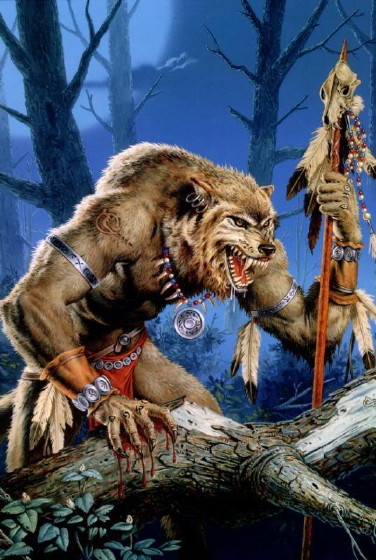Wed 25 May 2016
Review: Hunt for the Skinwalker: Science Confronts the Unexplained at a Remote Ranch in Utah
Posted by PJ under books, cryptids, folklore, forteana, indians, paranormal, review, tricksters, witches
No Comments

Hunt for the Skinwalker: Science Confronts the Unexplained at a Remote Ranch in Utah by Colm A. Kelleher and George Knapp
I’m not placing this book with the few UFO books in my possession, nor with the books on the occult or science. Not even with the books on folklore, although it contains all those elements. I am firmly placing this with my growing collection of books on the trickster—although I suppose it would fit in just as well with my collection on Faery. Although the authors mention the Native American myth of the skinwalker (or shapeshifting witch) in the title that’s just a convenient moniker taken from the Ute Indians of Utah who live near that “remote ranch” in an attempt to put a name on the phenomena occurring there.
In the religion and cultural lore of Southwestern tribes, there are witches known as skinwalkers who can alter their shapes at will to assume the characteristics of certain animals. Most of the world’s cultures have their own shapeshifter legends….In the American Southwest, the Navajo, Hopi, Utes, and other tribes each have their own version of the skinwalker story, but basically they boil down to the same thing—a malevolent witch capable of being transformed into a wolf, coyote, bear, bird, or any other animal. The witch might wear the hide or skin of the animal identity it wants to assume, and when the transformation is complete, the human witch inherits the speed, strength, or cunning of the animal whose shape it has taken. The Navajo skinwalkers use mind control to make their victims do things to hurt themselves and even end their lives…
Given the nature of the phenomena reported at that remote ranch, the idea of mind control seems a kind of refrain in the book. Fully half the book details the wealth of high strangeness that takes place, first to the Gorman family, then to the National Institute for Discovery Science (NIDS) researchers. The area had been known to the Utes and Navajos for generations as a wrong place, an abode of skinwalkers, and simultaneously a sacred place, where this world and the otherworld intersect. The white family who bought the ranch came from out of state and didn’t know the ranch’s bad reputation. They just knew they were getting it cheap and that finally they had a shot at making their cattle-ranching dreams come true. Unfortunately, the dream turned into a nightmare, replete with strange lights in the sky and buzzing “craft,” incursions of sasquatch (which the local Utes think are sometimes Bigfoot and sometimes skinwalkers posing as Bigfoot) and other weird and impossible animals. The Gormans were further plagued by cattle mutilations, poltergeists, and sabotage—a veritable state of siege. After three years of that and more, dreams shattered, the Gormans sold the ranch to NIDS so the scientists could do a thorough investigation. The scientists themselves soon came to feel as if they were the ones being investigated, toyed with, and made to confront the limits of science.
As I said, fully half the book recounts the frustrating experiences of the Gormans and the researchers on the ranch. Interesting at first, this section got repetitive. I enjoyed the drama of the first section, where the Gormans were faced with the onslaught of high strangeness, and I enjoyed the final section wherein the authors engage in philosophical and scientific discussions about what might be causing all this. Theories abound, but hard science does not.
If there is an intended message or lesson in all of this, what could it possibly be? Needless to say, everyone who played a part in the investigations has logged many a sleepless night while pondering this central question, without arriving at a satisfactory answer.
Whatever was happening at this ranch (and is still reportedly happening) seems to have more in common with quantum physics than Newtonian, giving an uncomfortable glimpse into the very strange universe we inhabit, one that changes shape depending on who is observing it. Not only is it stranger than we imagine, but stranger than we can imagine.
No Responses to “ Review: Hunt for the Skinwalker: Science Confronts the Unexplained at a Remote Ranch in Utah ”